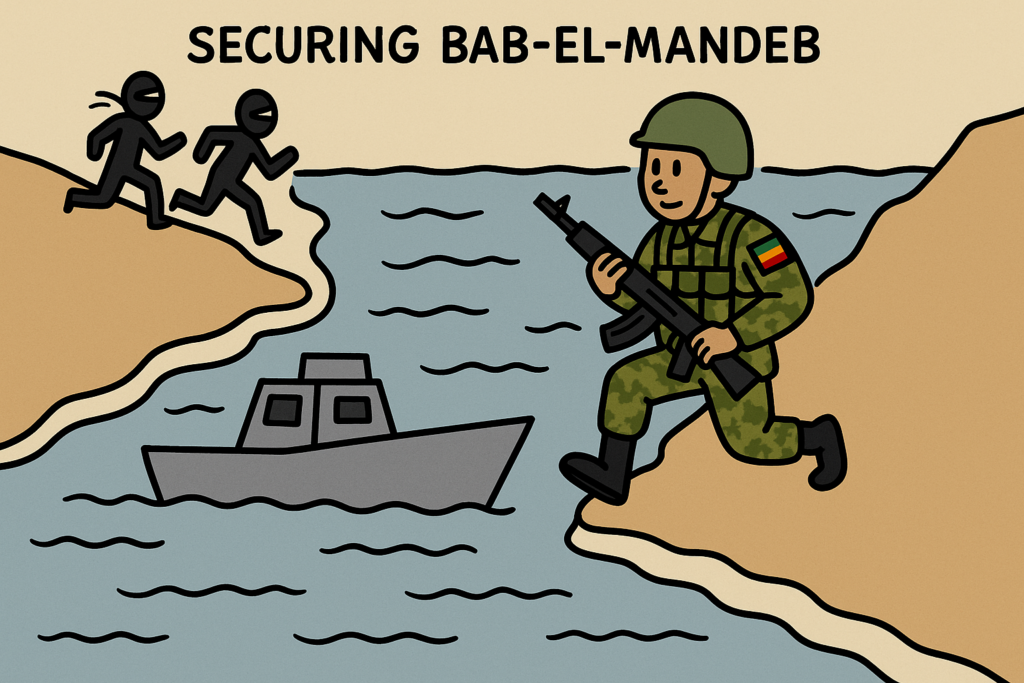Mekelle፡Telaviv, Nairobi, Pretoria, London, (Tigray Herald).
Ripple Effects in the Horn: How Iran’s War with Israel Could Shake the Horn of Africa
By Tesema Nadow in Addis Ababa | Tigray Herald Ethiopia Desk
As Israeli warplanes strike deep into Iranian territory, targeting nuclear sites and military installations, a different kind of fallout is rippling across the Red Sea. From Eritrea’s fragile regime to the Tigray crisis and Sudan’s shifting alliances, Iran’s weakening position could signal a historic reset for the Horn of Africa one that might, finally, open the door to peace, accountability, and regional realignment.
Eritrea: Isaias Afwerki Loses His Foreign Shield
Isaias Afwerki’s regime in Eritrea has long survived by aligning itself with authoritarian powers and rogue states. Iran has been among its most crucial enablers providing covert intelligence cooperation, maritime smuggling support, and political cover in international forums.
If Iran’s military and economic capacity are crippled by sustained Israeli strikes, Afwerki may find himself without a patron exposed to internal dissent and regional isolation.
“Eritrea has overplayed its hand,” says Dr. Teklebrhan Girmay, a regional analyst. “Once Tehran weakens, Eritrea’s ability to project power in Tigray, Sudan, and beyond will vanish.”
Sudan: Al-Burhan’s Risky Game with Iran Nears Collapse
General Abdel Fattah al-Burhan’s military government in Sudan recently rekindled ties with Iran, reportedly allowing drone shipments that emboldened the RSF (Rapid Support Forces) in the ongoing Sudanese civil war. But as Israel escalates its offensive and Gulf states tighten pressure, Sudan may be forced to abandon its flirtation with Tehran.

A realignment toward Egypt, the UAE, or Israel could isolate militant factions operating along Ethiopia’s western borders potentially de-escalating violence in the Benishangul-Gumuz and Metekel regions.
Red Sea: Iran’s Routes Crumble as Israel and Ethiopia Strategize
One of Iran’s most strategic assets has been its influence over maritime smuggling and proxy operations in the Red Sea, particularly through the Bab el-Mandeb strait. Through Houthi rebels in Yemen, Iranian operatives have harassed global shipping, targeted Israeli-linked vessels, and threatened Saudi and Emirati trade.

But that influence is now crumbling.
With Israeli naval presence expanding in the Red Sea and Iranian warships on the defensive, new regional players are stepping forward including Ethiopia.
For the first time, Addis Ababa is reportedly considering deploying troops to the Red Sea corridor, both to protect its economic interests and to support anti-terrorism efforts alongside Israel and other Abraham Accord signatories.
“Ethiopia recognizes the Red Sea as its future economic lifeline,” says a Horn of Africa security analyst in Djibouti. “Partnering with Israel and neutralizing the Houthis could be a strategic masterstroke.”
A potential joint Ethiopia–Israel maritime operation would not only disrupt Iranian logistics but also signal a new regional security architecture one that excludes Iran, isolates Eritrea, and weakens Houthi access to arms and Iranian funding.
TPLF and Eritrea: End of the ‘Unholy Alliance’?
Ironically, the collapse of Iranian networks may also erode the quiet collaboration between the TPLF and Eritrean authorities. Once bitter enemies, factions within the TPLF have been accused of engaging with Eritrea in a shared bid to pressure Addis Ababa.
If Isaias Afwerki is politically isolated and loses military flexibility, that collaboration could dissolve forcing the TPLF to either reconcile with federal institutions or retreat into irrelevance.
“The alliance between TPLF and Asmara was always transactional,” says Kisanet Mehari, a human rights advocate in Shire. “If that transaction is no longer valuable, the road to peace might finally open.”
A Tipping Point for Tigray and Ethiopia
With Eritrean forces weakened, TPLF influence reduced, and Iran distracted, Ethiopia may find itself with a rare diplomatic window to:
Ensure the return of displaced Tigrayans (IDPs)
Rebuild infrastructure in war-affected zones
Establish civilian-led reconciliation mechanisms
Reclaim full territorial control without new wars
Prime Minister Abiy Ahmed’s recent statement affirming readiness to return IDPs, while warning TPLF leaders to end their foreign entanglements, may be the clearest sign yet that the federal government sees an opening to restore sovereignty without bloodshed.
Conclusion: Toward a Post-Iran Horn?
Iran’s weakening may not bring peace overnight. But in a region where foreign meddling, arms flows, and proxy regimes have perpetuated cycles of war, its collapse could trigger a strategic reset.
The Red Sea corridor could be reclaimed from Iranian and Houthi control.
Eritrea’s isolation could force a political transition.
TPLF’s regional bargaining chips could disappear.
And Ethiopia may finally move from post-war paralysis to post-war reconstruction.
The collapse of Iran’s influence in the region would not only undercut regimes like Isaias Afwerki’s, but it could dismantle the web of proxy alliances that have kept Ethiopia locked in a cycle of internal war, foreign occupation, and humanitarian disaster.
“This could be the beginning of the end for political warlords who survive off chaos,” says Dr. Fisseha Hagos, a peacebuilding expert based in Nairobi. “It could just maybe be the opening Tigray needs to begin healing.”
But for that healing to happen, the region must seize the moment before another war replaces the one that just ended.




